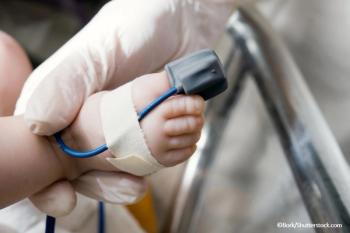
Top 10 Common Medication Errors-Drug #6: Ketorolac
Ketorolac is a good option for relieving pain in patients with sickle cell disease, but there is a problem with children.
Medication errors in the pediatric population occur in both the inpatient and outpatient settings. Pediatric medication errors occur in the outpatient setting at a rate of about 16% of cases.1
Many potential medication errors may occur. In this series, I focus on 10 errors that are seen frequently in outpatient clinics. In previous articles, I focused on common errors associated with infant acetaminophen,2 insulin,3 ceftriaxone,4 hydralazine and hydoxzyine,5 and amoxicillin/clavulanic acid.6
A 5-year-old boy (weight, 20 kg) with a history of sickle cell disease presented to the clinic after 2 days of increased back pain. A detailed workup showed no signs of infection. The patient’s parents do not like their son taking narcotics for the pain. Thus, he was given a prescription for ketorolac (10 mg PO every 6 hours x 5 days [0.5 mg/kg dose]).
What’s the problem here?
Discussion
Ketorolac is a good option for relieving pain in patients with sickle cell disease. The problem with this medication is that there are no pediatric studies for multiple-dose treatment with the oral formulation.
If ketorolac is prescribed for multiple dosing, the intravenous formulation typically is used and the dose is 0.5 mg/kg/dose IV every 6 hours.7,8 In adults, the oral ketorolac dose actually is different from the intravenous dose (10 mg versus 30 mg, respectively).
Based on this dose difference, one would think that the oral dose also may be lower for pediatric patients. However, there have not been any studies thus far to confirm that hypothesis.
Until further studies are conducted, oral ketorolac should not be used for multiple-dose treatment in infants and young children aged 16 years or younger who weigh 50 kg or less.
References
1. Kaushal R, Goldmann DA, Keohane CA, et al. Adverse drug events in pediatric outpatients. Ambul Pediatr. 2007;7:383-389.
2. So J.
3. So J.
4. So J.
5. So J.
6. So J.
7. Taketomo CK, Hodding JH, Kraus DM. Pediatric Dosage Handbook. 18th ed. Hudson, Ohio: Lexi-Comp; 2011.
8. Buck ML. Clinical experience with ketorolac in children. Ann Pharmacother. 1994;28:1009-1013.
Newsletter
Enhance your clinical practice with the Patient Care newsletter, offering the latest evidence-based guidelines, diagnostic insights, and treatment strategies for primary care physicians.



















































































































































































































































































